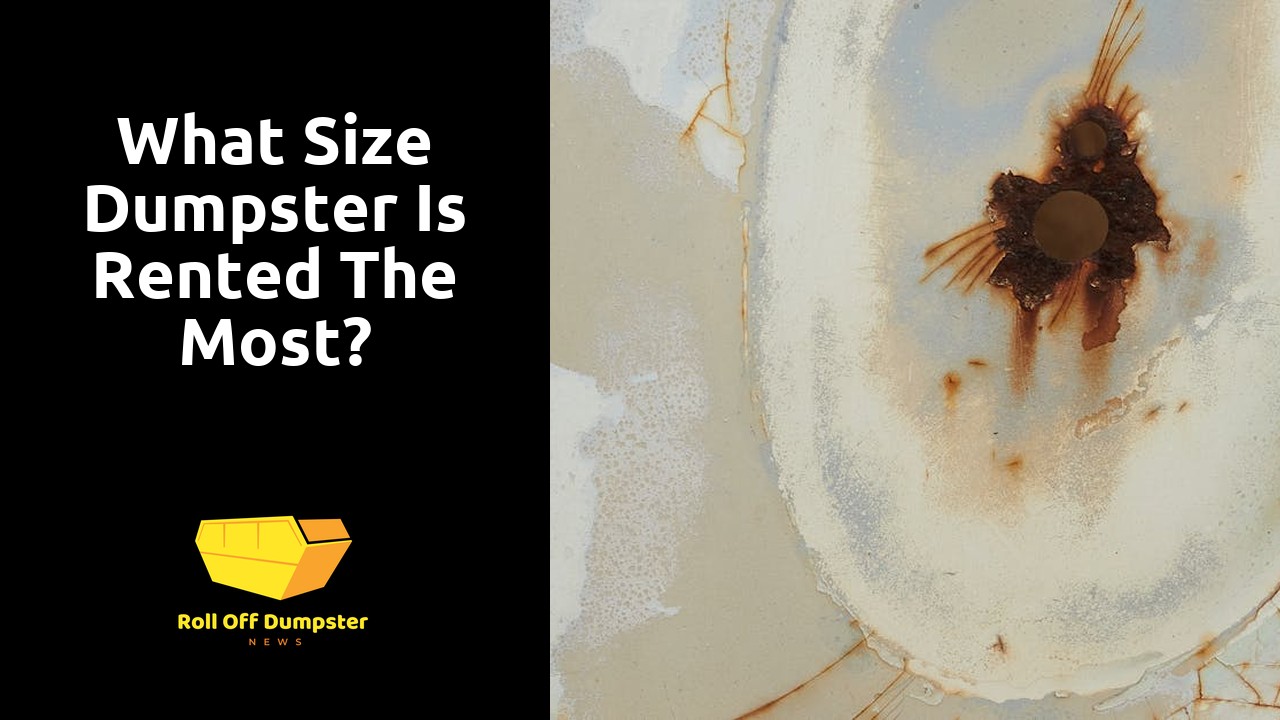What size dumpster is rented the most?

Table Of Contents
Seasonal trends in dumpster size preferences
During the warmer months of the year, such as summer, there tends to be an increase in construction projects leading to a higher demand for larger dumpster sizes. Contractors and builders often require bigger dumpsters to handle the large volumes of construction waste generated. Additionally, with the favorable weather conditions, more people engage in home renovation projects during the summer, further contributing to the popularity of larger dumpster rentals.
On the other hand, during the winter season, there is typically a shift towards smaller dumpster sizes due to decreased outdoor activities and construction projects. Homeowners may opt for smaller dumpsters for indoor clean-up projects or decluttering tasks. The colder weather and potential for snow can also impact waste generation patterns, influencing the size of dumpsters rented during the winter months.
Summer construction projects
Summer is a prime time for construction projects, as the weather is typically more favorable for outdoor work. This increase in construction activity often leads to a higher demand for dumpsters of various sizes to handle the waste generated during these projects. Contractors and construction companies frequently opt for larger dumpster sizes during the summer months to accommodate the larger volumes of debris produced.
Additionally, the longer daylight hours in summer allow for extended work hours, resulting in more waste being generated within a shorter period. This rapid accumulation of waste necessitates the use of appropriately sized dumpsters to ensure efficient waste management on construction sites. As a result, it is common to see an uptick in the rental of medium to large dumpsters during the summer season to meet the needs of construction projects of varying scales.
Economic factors influencing dumpster rental choices
When it comes to choosing a dumpster size for rental, economic factors play a significant role in decision-making. Cost is often a primary consideration for businesses and individuals looking to dispose of waste efficiently. Understanding the financial implications of different dumpster sizes is crucial in selecting the most suitable option.
Small businesses, in particular, need to balance cost-effectiveness with their waste management requirements. Opting for a smaller dumpster size may be more economical for businesses that generate a limited amount of waste on a regular basis. By carefully evaluating their budget constraints and waste production levels, businesses can make informed decisions that align with their financial goals.
Costeffective options for small businesses
Small businesses are always looking for cost-effective options to manage their waste disposal needs efficiently. Dumpster rental choices play a crucial role in ensuring that businesses can dispose of their trash without breaking the bank. Opting for smaller dumpster sizes can be a practical solution for small businesses that do not generate a significant amount of waste on a regular basis. By renting a smaller dumpster, businesses can save money on rental fees and ensure that they are not paying for unused space.
Moreover, some companies offer flexible rental options that allow small businesses to choose the duration and frequency of dumpster services based on their specific needs. This can be particularly beneficial for businesses with fluctuating waste disposal requirements throughout the year. By leveraging these cost-effective rental options, small businesses can efficiently manage their waste disposal needs without overspending on unnecessary services.
Technological advancements in waste management affecting dumpster size selection
Technological advancements have revolutionized waste management practices, leading to more informed decisions when selecting the appropriate dumpster size. Smart waste monitoring systems equipped with sensors help track the volume of waste being disposed of, enabling businesses to optimize their dumpster size based on actual usage data. This data-driven approach ensures that businesses rent dumpsters that align with their specific needs, avoiding unnecessary expenditures on oversized containers.
Moreover, these advancements allow for real-time monitoring of waste levels, alerting businesses when dumpsters are reaching capacity. This proactive notification system helps prevent overflow situations, which can lead to safety hazards and environmental issues. By leveraging technology to optimize dumpster size selection, businesses can efficiently manage their waste output while minimizing costs and reducing their environmental footprint.
Smart waste monitoring systems
Smart waste monitoring systems are revolutionizing the way companies manage their waste disposal needs. These advanced systems utilize technology such as sensors and data analytics to provide real-time data on dumpster fill levels. By having this valuable information at their fingertips, businesses can optimize their waste collection schedules, reduce unnecessary pickups, and ultimately save on costs associated with waste management.
One key benefit of smart waste monitoring systems is their ability to improve overall efficiency in waste management processes. By automatically tracking fill levels and providing timely alerts when dumpsters are nearing capacity, these systems help prevent overflowing bins and ensure a continuous workflow of waste disposal. This proactive approach not only enhances operational efficiency but also contributes to a more sustainable and environmentally friendly waste management strategy.
FAQS
What factors determine the size of dumpster rented the most?
The size of dumpster rented the most is often influenced by seasonal trends, economic considerations, and technological advancements in waste management.
Why are summer construction projects a significant factor in determining dumpster size preferences?
Summer is a peak season for construction projects, leading to a higher demand for larger dumpsters to accommodate the increased waste generated during these projects.
How do economic factors influence dumpster rental choices?
Economic factors such as budget constraints and cost-effective options play a crucial role in determining the size of dumpster rented by individuals and businesses.
What are some cost-effective options for small businesses looking to rent dumpsters?
Small businesses can consider renting smaller dumpsters or opting for flexible rental plans to manage their waste disposal needs within their budget constraints.
How do technological advancements in waste management impact dumpster size selection?
Technological advancements, such as smart waste monitoring systems, help businesses optimize their waste disposal processes and choose the most suitable dumpster size based on real-time data and analytics.